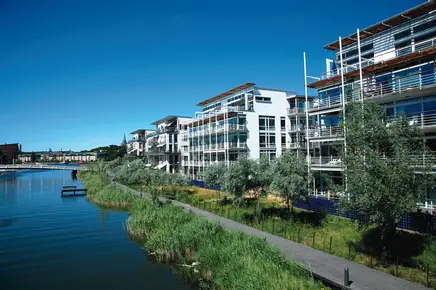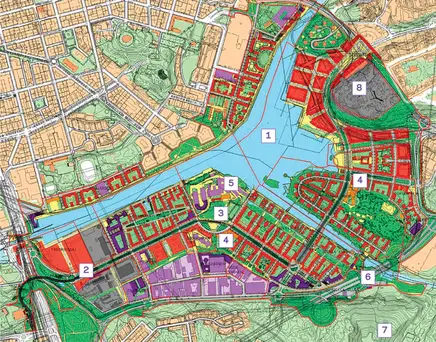By Thomas Lane
This new Stockholm suburb demonstrates how simple, robust, centralised systems can outperform flashy designs bristling with turbines. But can it work as a model for Gordon Brown’s eco-towns?
Summary
- Hammarby Sjöstad is Sweden’s version of a sustainable community and has received streams of high profile visitors including housing minister Yvette Cooper
- Target for the suburb is for houses to use half the energy and water than a normal Swedish property
- Waste is collected through a system of tubes manufactured by Envac and burned in a CHP plant
- Swedes believe in providing green heat and power centrally, rathern than adding bolt-on renewables
- Developer Quintain hoping to create a similar model to Hammarby in Greenwich
Main text
For some time now, there has been a steady pilgrimage of the great and the good to an ordinary-looking suburb of Stockholm. The pilgrims included Yvette Cooper, the housing minister and Nicky Gavron, London’s deputy mayor, the chief executives of several councils and housebuilders, as well as sundry developers and architects. The reason they made the journey is that Hammarby Sjöstad is Sweden’s version of a sustainable community – and it couldn’t be more different from the way we do things here if it tried.
The focus in the UK is to turn homes into self-sufficient islands by plastering them with expensive renewable technologies and incorporating water recycling at a very localised level. The Swedes take the opposite approach: building comparatively conventional homes and providing heat and power through carefully planned infrastructure at a district level. This is paid for upfront by the city council and the utilities companies.
Combustible waste is cleverly sucked through a system of tubes, rather than being taken away by polluting lorries, and burned in a combined heat and power plant to provide electricity and heat via the district heating system (see How the rubbish is collected).
There is a dedicated wastewater treatment plant, which generates biogas from sewage and uses it to power local buses. Even warm wastewater is made to yield its energy, which is then used for space heating (see Half the energy, half the water, below).
Continue reading more at http://www.building.co.uk/story.asp?sectioncode=583&storycode=3096706
Posted by: http://arquionic.blogspot.com/



Leave a Reply
You must be logged in to post a comment.